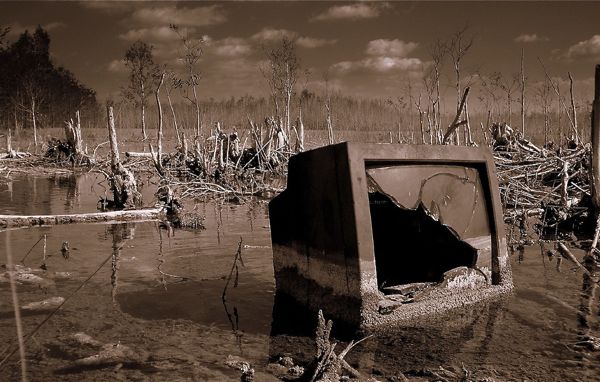
Streaming killed television.
Not long ago, we basked in a second golden age of TV. Breaking Bad, Mad Men, The Sopranos, The Wire—stories built to last. Networks fought for viewers, but they also fought for legacy. HBO owned Sunday nights. FX thrived on grit. AMC became an empire on the back of a chemistry teacher in his underwear.
Then came Netflix.
In 2007, it introduced streaming, revolutionizing content consumption. Entire seasons arrived at once. Appointment television disappeared. Binge culture took over. It worked—at first. Now, every platform follows the same model. Paramount+, Max, Hulu, Disney+. Content floods in, washes over audiences, and vanishes.
Streaming’s rise coincided with traditional TV’s collapse. In July 2023, for the first time, broadcast and cable viewership fell below 50% of total television consumption. Broadcast viewing dropped 5.4 percent, cable plunged 12.5 percent, while streaming surged 25.3 percent year-over-year. The numbers tell the story. TV as we knew it isn’t just shrinking; it’s evaporating.
Seasons shrank. Time between them stretched. A six-episode series now takes two years for another six. By then, momentum is gone. So is the audience.
Writers stopped writing, forced instead to “break story” for months with no guarantee of a second season. Actors drifted between projects, waiting for green lights that never come. Shows, once built to last, became disposable. Mindhunter. GLOW. 1899. Gone, not because they failed, but because an algorithm decided they weren’t worth the cost.
The business changed, and with it, the art. Binge culture gutted anticipation. No more week-to-week debates. No more watercooler moments. Just a weekend of consumption, then silence. By Monday, the next thing arrives. Stories aren’t told; they’re dropped.
Meanwhile, networks withered. Prestige TV—the kind that made HBO a powerhouse—got swallowed by mergers, budget cuts, and tax write-offs.
But television isn’t dead yet.
If the second golden age taught us anything, it’s that audiences reward patience. They invest in long-form storytelling. They build relationships with characters, not algorithms.
So how do we fix it? Slow down. Tell bigger stories again. Give shows time to breathe. Bring back the week-to-week model that kept people talking, debating, anticipating. Make TV an event again, not just another piece of disposable content.
Streaming won. But television isn’t lost — it just forgot what made it special.
